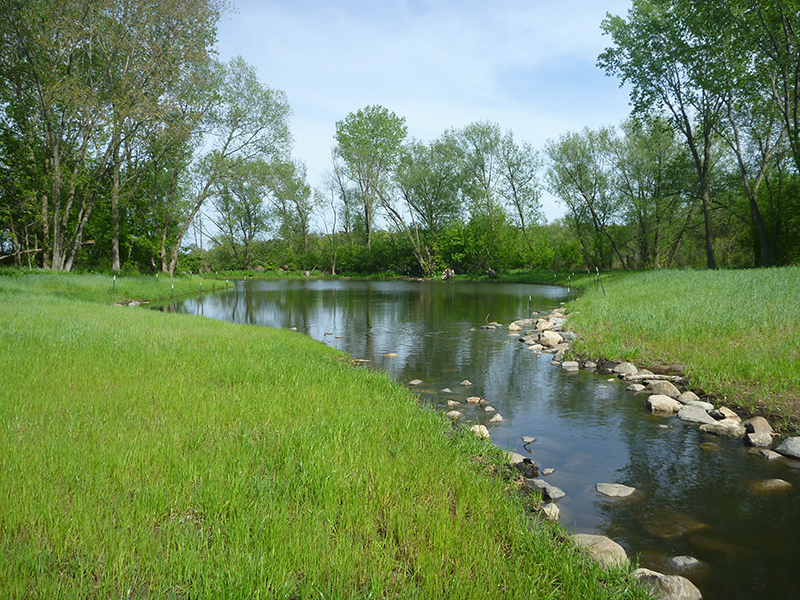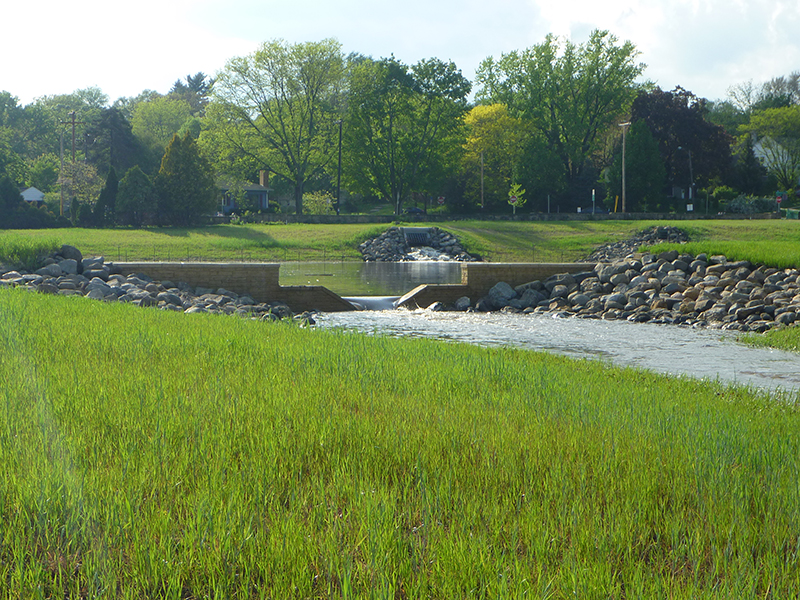Madison is proud to have one of the oldest and most diverse, restored ecosystems in the country, the UW Madison Arboretum. Originally created in 1934, unfortunately the Arboretum is situated such that it is regularly inundated with large amounts of urban runoff. It is located at the main discharge point of a 2.5-square-mile watershed where the runoff contains a significant load of leaves, dirt, road salt, sand, and associated nutrients. The long-term effects have been severe erosion of the prized vegetation in the Arboretum, as well as negative impacts on the water quality of the downstream receiving body – Lake Wingra. Initially, Secret Pond was created in the mid 1980s to address this issue. The pond was built between the outlet of the watershed and Lake Wingra to control the pollutants and stormwater flow rate. However, over time the pond has lost its effectiveness. After considering the feasibility and impacts of numerous potential approaches to restoring this area, we developed a design that includes an eco-friendly rebuilding of Secret Pond to an expanded size of 1.4 acres with a clay lining to trap and filter out pollutants. In addition to the pond, a naturalized, 350-foot meandering channel was designed to slow down the velocity of stormwater and to help preserve the banks. Following the channel, a stilling pool further dissipates erosive forces before flows enter the downstream wetlands. The channel and banks of the pond were rebuilt and a variety of native species planted. The overall hydraulics and drainage patterns of the area have been modified. Overall, the new pond is expected to provide a 52 percent reduction in total suspended solids (sediment) reaching Lake Wingra from the watershed. This will help improve the health of Lake Wingra by meeting UW-Madison’s stormwater permit and the Rock River TMDL requirements for control of sediment and phosphorus to water bodies.
Back to Project GalleryProjects





